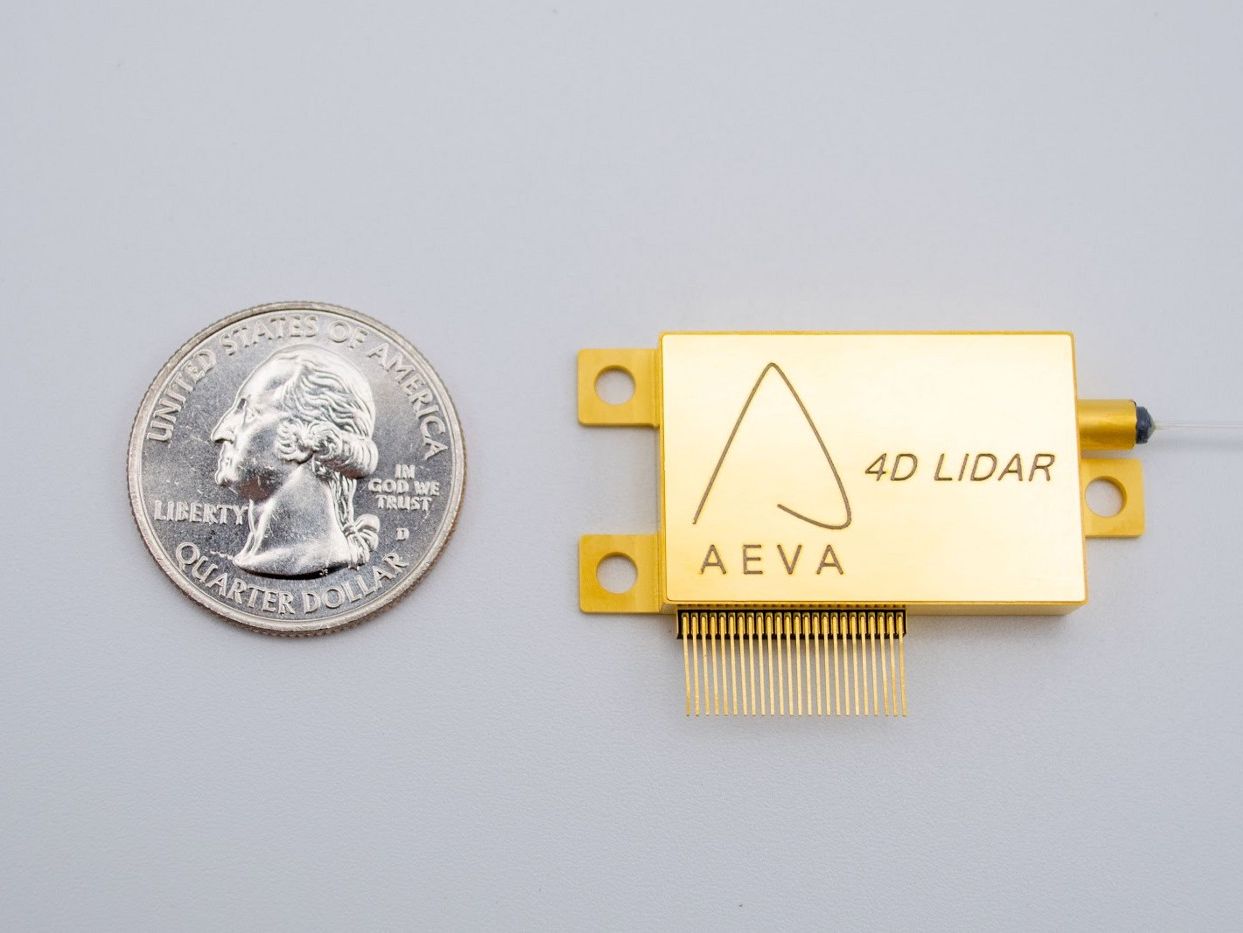Aeva FMCW 4D LiDAR gain NVIDIA DRIVE support
- March 16, 2022
- William Payne

Sensor firm Aeva’s Aeries 4D LiDAR sensors are now supported on the NVIDIA DRIVE autonomous vehicle platform. Aeva’s Frequency Modulated Continuous Wave (FMCW) 4D LiDAR sensors detect 3D position and instant velocity for each point at distances up to 500 metres.
Aeva’s sensors have 4D Perception capabilities that include Ultra Resolution and 4D Localisation.
Ultra Resolution provides a real-time camera-level image of the world with up to 1,000 lines per frame with no motion blur for the static scene, providing up to 20 times the resolution of legacy time of flight LiDAR sensors. Image segmentation enables the detection of roadway markings, drivable regions, vegetation, road barriers, as well as detecting road hazards like tyre fragments at up to twice the distance of legacy time of flight LiDAR sensors. Instant velocity data allows for high confidence detection and tracking of dynamic objects such as oncoming vehicles and other moving objects at distances up to 500 metres.
4D Localisation enables real-time ego vehicle motion estimation with six degrees of freedom, motion compensation and on-line sensor extrinsic calibration to aid with sensor fusion. These vehicle estimation features also enable accurate vehicle positioning and navigation without the need for additional sensors, like IMU or GPS, for safe autonomous navigation in GPS-denied and featureless environments like tunnels and parking structures.
“Bringing Aeva’s next generation 4D LiDAR to the NVIDIA DRIVE platform is a leap forward for OEMs building the next generation of Level 3 and Level 4 autonomous vehicles,” said Soroush Salehian, Co-Founder and CEO at Aeva. “We believe Aeva’s sensors deliver superior capabilities that allow for autonomy in a broader operational design domain, and our unique features like Ultra Resolution surpass the sensing and perception capabilities of legacy sensors to help accelerate the realisation of safe autonomous driving.”
Gary Hicok, Senior Vice President of Engineering at NVIDIA, added, “Aeva delivers a unique advantage for perception in automated vehicles because it leverages per-point instant velocity information to detect and classify objects with higher confidence across longer ranges. With Aeva as part of our DRIVE ecosystem network, we can provide customers access to this next generation of sensing capabilities for safe autonomous driving.”





